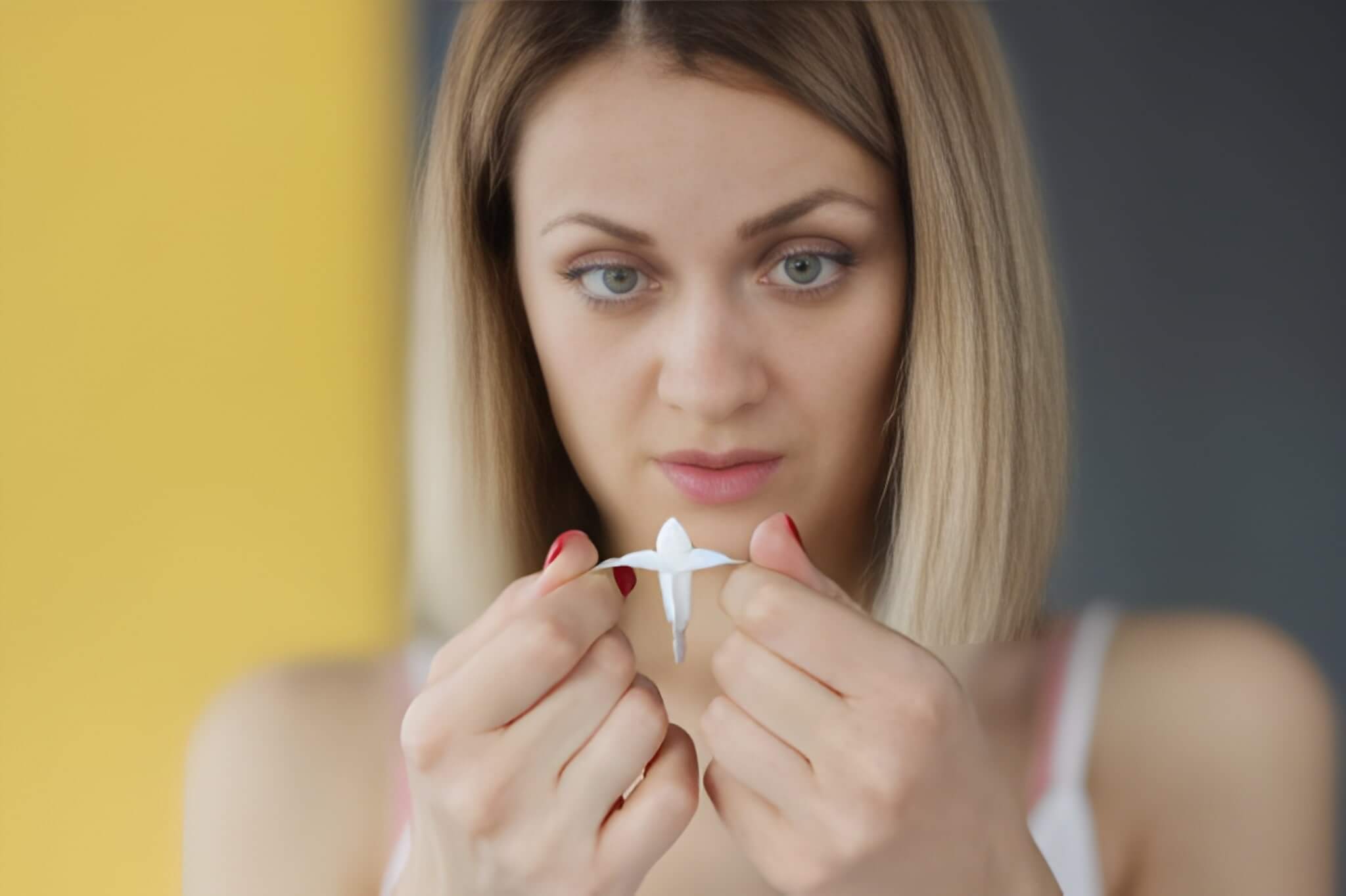Medically Reviewed by Dr. Meghan Killilea Galli — HealthGardeners
IUDs (intrauterine devices) are one of the most effective forms of birth control available. But at some point, every IUD needs to be removed—whether because it expired, you want to switch methods, or you’re planning a pregnancy.
A question I sometimes hear from patients in Hartford, CT is: “Can you remove an IUD yourself?” or even “My boyfriend pulled out my IUD—what now?”
As a Family Nurse Practitioner, let me be clear: IUD removal should always be performed by a healthcare professional. While stories of women attempting self-removal are out there, doing so carries real risks, including injury, infection, and incomplete removal.
This guide will explain why professional removal is safest, what can go wrong with IUD self-removal, and what to expect from a safe removal in Hartford.
Can You Remove an IUD Yourself?
Technically, yes—you might be able to pull on the IUD strings and remove the device yourself. But should you? Absolutely not.
Professional organizations like the American College of Obstetricians and Gynecologists (ACOG) strongly recommend that IUDs be removed by trained clinicians.
Trying to remove an IUD at home can result in:
-
Broken strings or incomplete removal
-
Injury to the cervix or uterus
-
Excessive bleeding or infection
-
Difficulty locating the device if embedded
Why IUD Removal Can Be Difficult
Some women attempt self-removal because they assume the process is as simple as pulling on the strings. However, several situations can make removal complicated:
-
Missing or broken strings
– Strings may retract into the cervix or uterus, making removal impossible without special tools. -
Embedded IUDs
– Sometimes the IUD becomes lodged in the uterine wall (myometrium). This requires medical techniques such as hysteroscopy IUD removal. -
Device migration
– In rare cases, an IUD can shift outside the uterus, requiring surgery for safe removal. -
Cramping and bleeding
– Even in simple cases, pulling out an IUD can cause pain and bleeding. Without sterile tools and medical supervision, risks are higher.
Why You Should Not Let Someone Else Remove Your IUD
I’ve heard patient stories like: “My boyfriend pulled out my IUD.” This is dangerous because:
-
Non-professionals lack sterile equipment and knowledge.
-
Improper pulling can cause injury to the cervix.
-
If the IUD doesn’t come out completely, fragments may remain inside the uterus.
What About At-Home Methods?
Searches for “how to remove IUD at home” or “how to take out IUD at home” are common online. Some advice suggests tugging the strings gently in a squatting position.
While this might sound simple, the risks outweigh the convenience:
-
You can’t confirm full removal without medical imaging.
-
You increase your risk of infection.
-
You might need emergency care if removal goes wrong.
Safe IUD Removal in Hartford
Instead of trying IUD self-removal, schedule with a Hartford provider. The process is quick, safe, and usually painless.
What happens in-office:
-
Speculum is inserted to visualize the cervix.
-
Provider gently pulls IUD strings with sterile forceps.
-
IUD arms fold, and it slides out in seconds.
-
If strings are missing, ultrasound or hysteroscopy may be used.
Discomfort level:
-
Mild cramping or pressure for a few minutes.
-
Light spotting afterward is normal.
Can You Remove a Mirena IUD Yourself?
Whether it’s a Mirena IUD, Kyleena, Skyla, or a copper ParaGard, the risks of DIY removal are the same.
-
Hormonal IUDs (like Mirena): Removing them yourself won’t allow proper follow-up on side effects or hormone withdrawal.
-
Copper IUDs: They have firmer arms, which can make removal more uncomfortable without medical technique.
Fertility After Removal
Many women ask: “How long after IUD removal can you get pregnant?”
-
Fertility usually returns immediately.
-
Some women conceive within the first month.
If you don’t want to become pregnant, use backup contraception right away.
When to Call a Provider Urgently
If you’ve tried to remove your IUD yourself and experience:
-
Heavy bleeding
-
Severe pain
-
Fever or chills
-
Strings breaking or getting stuck
👉 Seek immediate care at a Hartford women’s health clinic.
Hartford Clinics Offering IUD Removal
-
Hartford HealthCare Women’s Health
-
Saint Francis Hospital Women’s Center
-
UConn Health OB/GYN Services
These clinics can handle both routine and difficult IUD removals.
FAQs About IUD Removal
1. Can you pull your IUD out yourself?
You might be able to, but it’s unsafe and not recommended.
2. What if my boyfriend pulled out my IUD?
See a provider right away to confirm complete removal and rule out complications.
3. Is taking an IUD out yourself safe?
No. It increases risks of infection, bleeding, and incomplete removal.
4. Can you remove a Mirena IUD yourself?
No. Removal should always be done by a professional.
5. Where can I get my IUD removed in Hartford?
Local options include Hartford HealthCare, Saint Francis Hospital, and UConn Health.
Final Thoughts
So, can you remove an IUD yourself? Technically yes, but it’s not safe. DIY IUD removal puts you at risk of injury, infection, and incomplete removal.
For Hartford women, the safest option is to schedule removal with a trusted provider. The process is quick, usually painless, and ensures your health and fertility are protected.
At HealthGardeners, I help women make safe, informed decisions about their reproductive health — because your well-being should always come first.
Disclaimer: This is informational content, not a substitute for professional medical advice.
“Explore reproductive health guidance for Hartford patients in Hartford Health.”

Meghan Killilea Galli, APRN, FNP-BC, is a Connecticut-based board-certified Family Nurse Practitioner with over 5 years of experience in urology, women’s pelvic health, and primary care. She practices with Hartford HealthCare and Griffin Faculty Practice Plan and founded Health Gardeners to share reliable, evidence-based health information.
Read More
